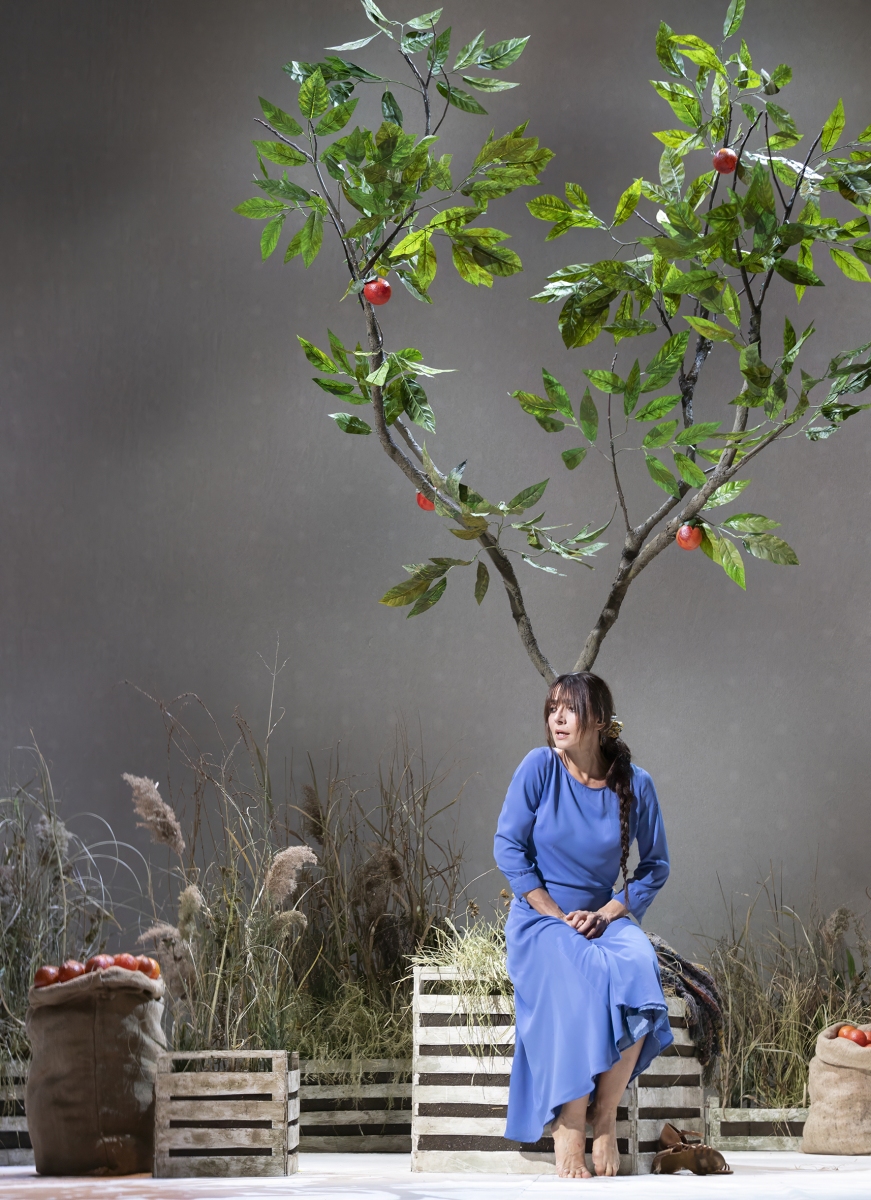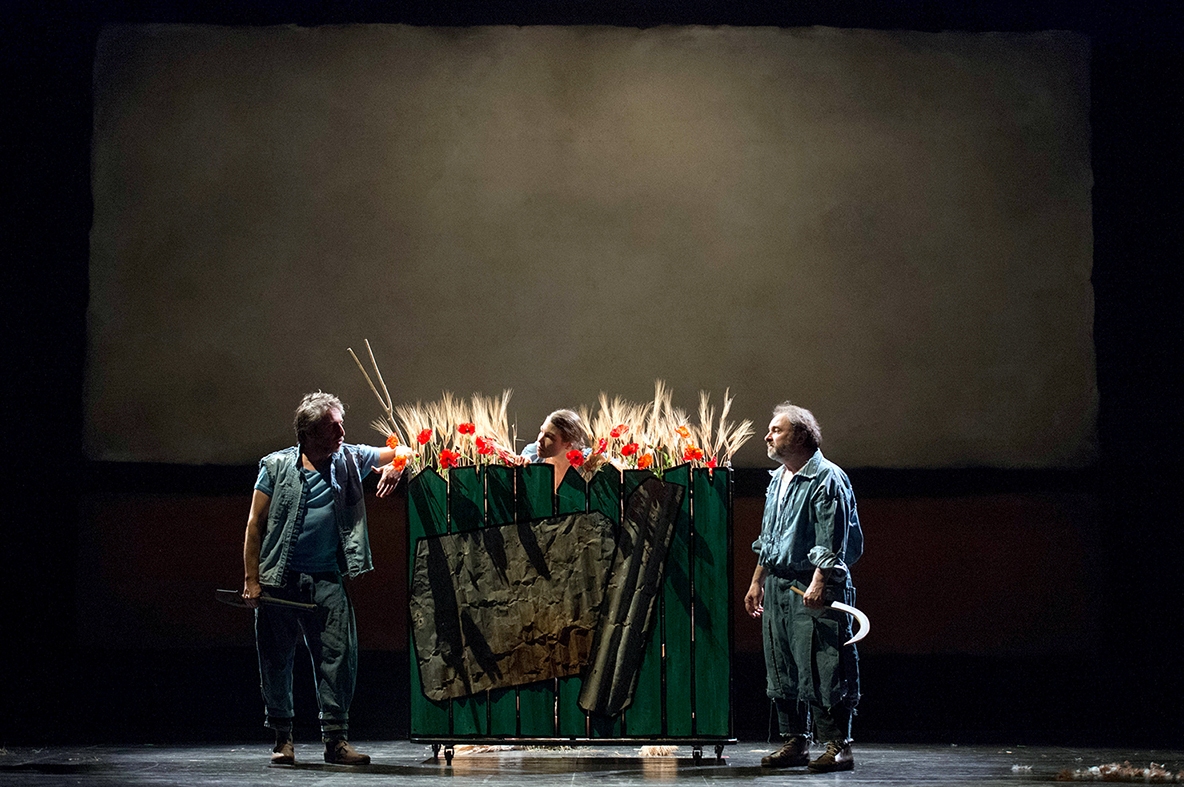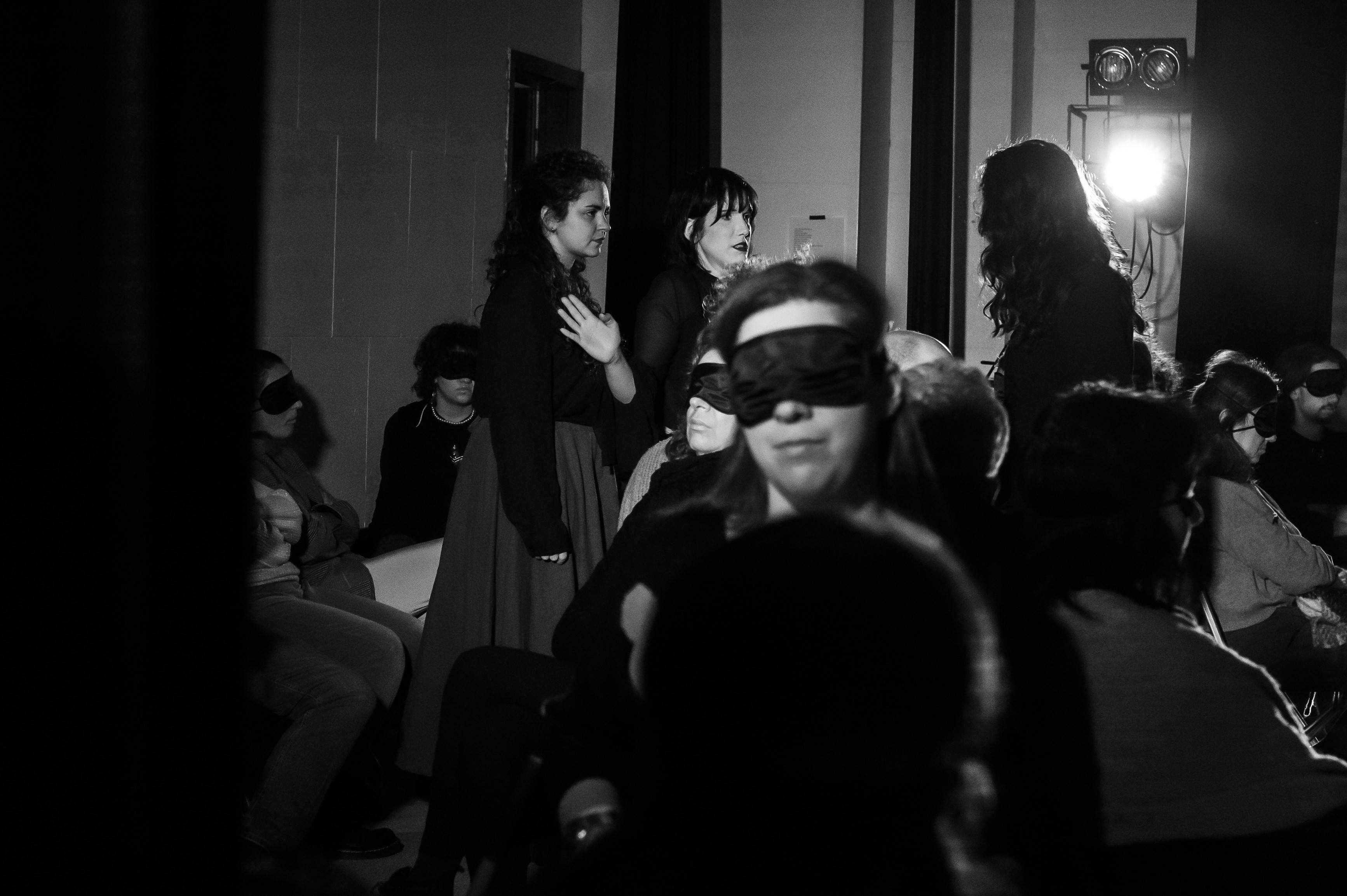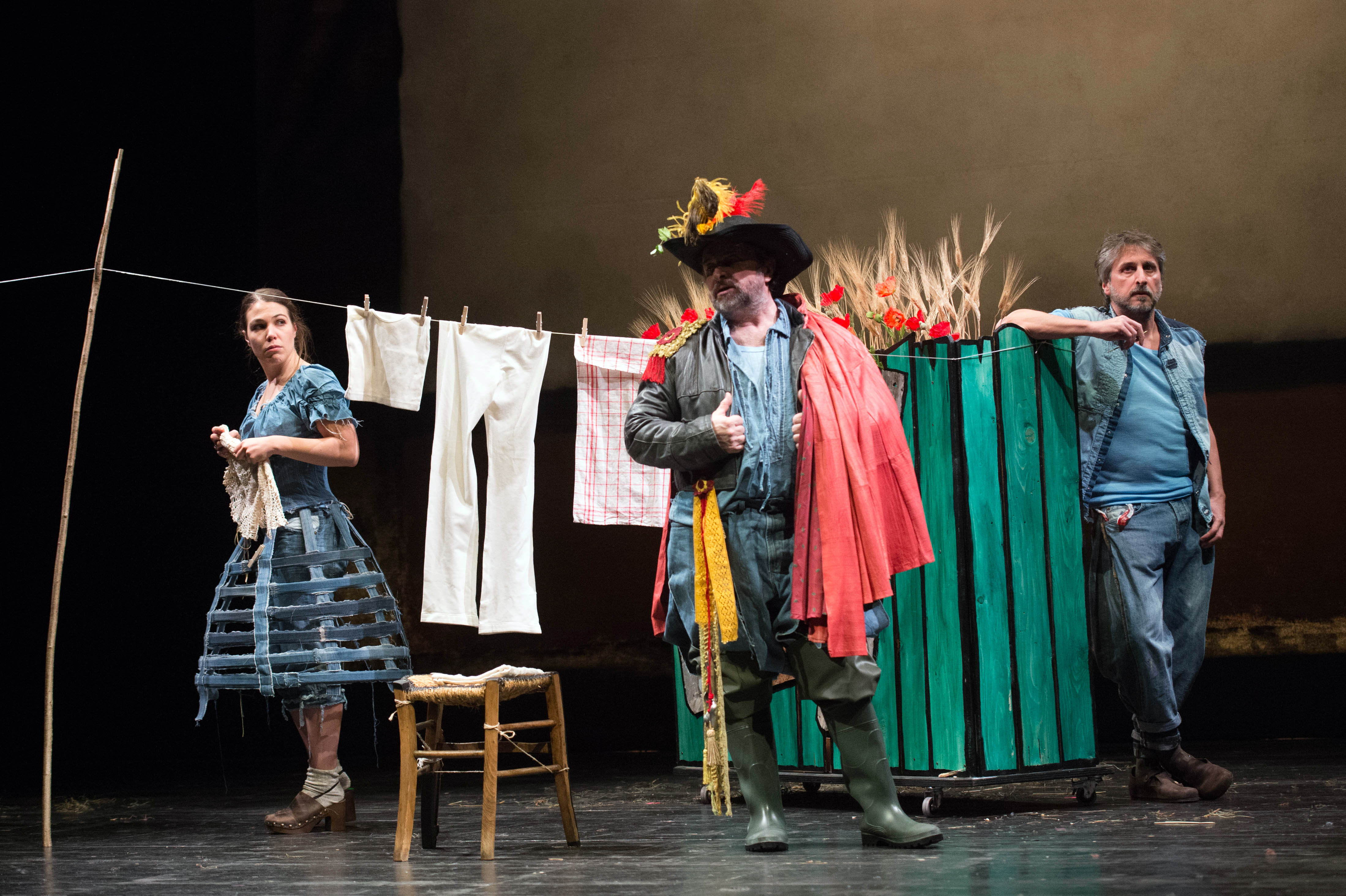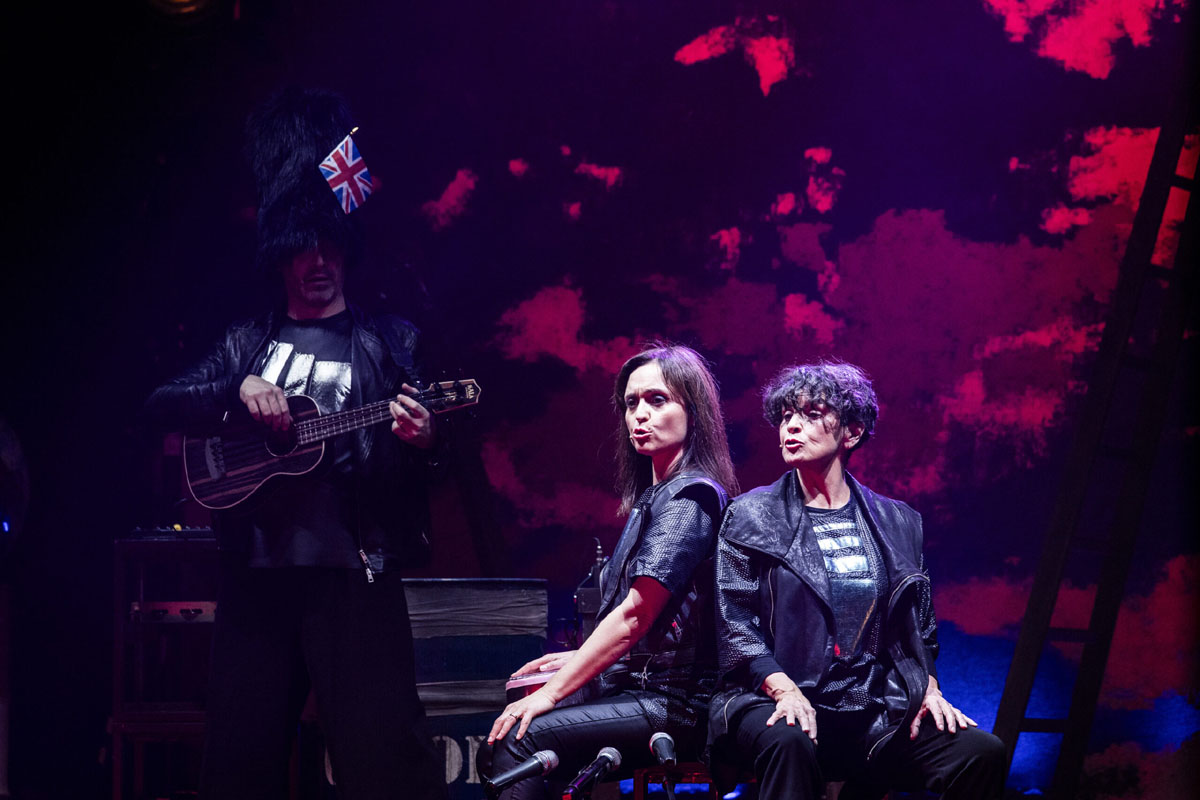Regaining a sense of belonging
Inclusive theatre
Revitalizing Communities Through Inclusive Theatre: Alessandria's Model for Belonging and Heritage
The project revitalises city’s cultural landscape by fostering cultural heritage and community engagement. Targeting students, families, elderly people, and marginalised groups, it provides affordable and participatory theatre experiences. The project strengthens social ties, boosts local economies, and reintroduces cultural activities to underserved communities. By blending tradition with innovation, it enhances a sense of belonging and serves as a replicable urban regeneration model
Italy
Local
City of Alessandria
Mainly urban
It refers to other types of transformations (soft investment)
Yes
2024-12-31
No
No
No
As a representative of an organisation
The Alessandria Community Theatre Project revitalises the city’s cultural landscape by fostering community spirit, social inclusion, and cultural engagement. It reconnects residents with their cultural identity, strengthening their sense of belonging to the city and its cultural heritage, as well as the collective well-being by restoring local traditions versus the modern tendency to globalisation. Target groups include students, families, elderly people, local artists, theatre companies, and vulnerable groups, such as inmates and economically disadvantaged individuals. The project reintroduces quality theatre to create accessible, participatory experiences, fosters inclusivity through affordable tickets and diverse programmes, collaborates with schools to integrate theatre into education, stimulates the local economy by creating jobs and boosting cultural tourism, and minimises environmental impact by using existing venues and promoting eco-friendly practices. It has achieved significant results, with over 10,000 annual attendees and a 50% year-on-year increase in student participation, involving more than 500 students in 2023-24. Local theatre companies have experienced a 30% rise in visibility and opportunities, while the city has been transformed from one with no public theatre programming for over a decade into a thriving cultural hub, which helped also in revitalising the local economy. The project strengthens community ties by providing inclusive spaces for interaction. By reconnecting the community with its cultural roots and promoting such inclusivity, the project demonstrates the transformative power of culture in urban regeneration. Its replicable model highlights how cultural initiatives can enhance social cohesion, economic growth, and environmental responsibility, offering a blueprint for other cities seeking to foster a sense of belonging and sustainable cultural development.
Cultural heritage
Urban regeneration
Community engagement
Culture for all
Local vs Global
The project embodies the NEB value of sustainability by integrating also an environmental, attention into such cultural initiative, demonstrating how the performing arts can foster ecological responsibility. The Municipality decided to reuse existing venues, avoiding the need for new construction, and implemented energy-efficient lighting, reduced waste through sustainable practices in theatre operations. Additionally, the fact of having such cultural activities inside the city, allows citizens to stay in the city for entertainment, this avoiding using their car to move out to other locations (big commercial malls with cinemas, or to bigger cities near Alessandria). This approach minimises the ecological footprint of cultural activities, setting an exemplary model for environmentally responsible cultural initiatives. In terms of economic sustainability, the project creates jobs for local artists, technicians, and local associations. It stimulates cultural tourism, contributing to local economic growth, and provides training for young people, enhancing skills in the theatre and creative sectors. These efforts link cultural revitalisation to economic development, offering a model for cities seeking to boost local economies through culture. Social sustainability is achieved by ensuring accessibility with affordable tickets, making theatre inclusive for all. The project’s balanced approach integrates sustainable practices, economic support, and inclusive community engagement. By aligning cultural development with NEB values, the initiative promotes a sustainable and inclusive future while offering a replicable framework for other European cities that needs to innovate to revitalise themselves. Its holistic model showcases how culture can drive urban transformation and foster a sense of belonging, resilience, and shared responsibility.
The project aligns with the NEB value of aesthetics by reactivating Alessandria’s cultural and urban identity through a sensory and collective experience. In a city facing financial instability, demographic shifts, and diminished attractiveness, the initiative redefines public spaces as cultural hubs, transforming neglected areas into vibrant places of artistic expression and social interaction. It fosters a deep, shared connection to the city by engaging residents in participatory theatre, allowing them to experience their environment through performance, storytelling, and creative expression. By blending local and national productions, the project creates a dialogue between tradition and contemporary practices, restructuring cultural values and bridging generations. This dynamic exchange renews appreciation for cultural heritage while opening spaces for innovation and new artistic interpretations. Theatre becomes a vehicle for community-driven transformation, where cultural experiences extend beyond performance to engage audiences in co-creation, strengthening their emotional attachment to place. Through participatory workshops and immersive performances, the project enhances the sensory experience of public spaces, making theatre not just an art form but a means of reactivating the urban fabric. It fosters a long-lasting movement by empowering citizens to become active cultural contributors, reinforcing a sense of ownership and belonging. By enabling creative expression and reinforcing the role of public space in cultural identity, the initiative demonstrates how the arts can reshape cities, create enduring connections across contexts, and inspire inclusive, long-term cultural revitalisation.
The project embodies the NEB value of inclusion by prioritising equality, accessibility, and social cohesion. It challenges segregation by ensuring that cultural participation is not a privilege but a shared right, breaking financial and social barriers that often exclude disadvantaged groups. By offering affordable tickets and tailored programming, it actively engages students, families, elderly people, inmates, and visually impaired audiences, fostering a more equitable distribution of cultural opportunities. The project ensures that those who are most often left out of artistic and public life become central to it, overcoming historical divides and creating spaces where all individuals, regardless of background, can come together. More than a cultural initiative, it is a model for fostering shared social values and strengthening societal development. The theatre becomes a space where differences are embraced, where representation is not symbolic but active, and where individuals collectively contribute to shaping their environment. The project’s participatory governance ensures that decision-making reflects the needs of the entire community, involving stakeholders in co-creating programming and promoting long-term engagement. By sharing resources and opportunities across different sectors, including education, local businesses, and community organisations, it encourages collective growth and long-lasting partnerships. Through these efforts, the initiative redefines how people interact with culture, one another, and their urban spaces. It introduces new ways of living together, where cultural participation is a tool for empowerment and social stability. By aligning accessibility with representation and participation, the project demonstrates how the arts can be a catalyst for deeper social transformation, fostering not only inclusion but also a lasting sense of belonging and mutual care.
The project actively involves citizens and civil society to ensure inclusivity and community-lead initiative, supported by a regional agency (Piemonte dal Vivo) that strengthened outreach through communication campaigns. Citizens participation has been key, fostering ownership, cultural pride, and shared responsibility of the programming. Citizens play dual roles as both beneficiaries and contributors, influencing the design of activities through consultations and surveys. Their engagement in participatory performances, student showcases, workshops, and theatre training for inmates has strengthened their emotional connection to the project. Civil society organisations, including schools, associations and foundations like Piemonte dal Vivo and ASM, and cultural groups, help shape and adapt the project to local needs. Schools integrated theatre into their curricula, fostering student participation, while elderly associations ensured accessibility and intergenerational dialogue. Local cultural organisations co-developed programmes, making the initiative relevant and impactful. Collaboration with businesses and cultural associations has enhanced sustainability, connecting economic and cultural development. Partnerships with local theatre groups and artists have supported creative local professionals while revitalising Alessandria’s artistic scene. This multi-level engagement has built trust, transparency, and long-term community support, proving that cultural participation drives urban transformation. By fostering participatory governance and addressing social needs, the project reconnects residents with their heritage and identity. In a city that had lost its cultural appeal, it reactivates urban spaces and creates an inclusive, lasting cultural movement. It stands as a replicable model for cities seeking to use culture as a tool for urban regeneration and social cohesion.
The project engaged diverse stakeholders in its design and implementation, ensuring it met community needs and achieved sustainable impact. Key stakeholders included the local government, cultural organisations, schools, elderly associations, and local businesses, each contributing resources, expertise, and networks. The Municipality of Alessandria led the project by providing funding, managing logistics, and ensuring alignment with local policies, particularly cultural accessibility. Local theatre companies and the Piemonte dal Vivo Regional Foundation enriched the artistic offering by developing programs and delivering performances. Their collaboration brought together local talent and national productions, ensuring high-quality content. Schools integrated theatre into curricula, encouraging student participation through workshops and performances. This involvement fostered cultural education and audience development among younger generations. Elderly associations helped design programs tailored to older audiences, ensuring inclusivity for often overlooked demographics. Their contributions promoted social cohesion and intergenerational engagement. Local businesses, including hotels, restaurants, and communication agencies, supported the project by boosting cultural tourism and awareness. Communication agencies expanded its reach through promotional campaigns, while businesses benefited from increased visitor activity, strengthening the local economy. Stakeholder collaboration, achieved through workshops and consultations, ensured transparency and inclusivity. Each group’s involvement enhanced the project’s relevance, accessibility, and cultural impact. This engagement fostered community trust, creating a sustainable and replicable model for cultural initiatives aligned with New Bauhaus values.
The project integrated disciplines such as cultural management, education, urban development, social inclusion, and economics. Representatives from these fields collaborated closely in the design and implementation, ensuring a truly impactful approach. Cultural management guided the artistic aspects, with theatre companies curating diverse programs blending local and national productions. Their expertise ensured high-quality performances while revitalising the city’s cultural identity. Educational institutions contributed by incorporating theatre into school programmes, fostering student engagement and audience development. This collaboration strengthened cultural learning and connected younger generations to the arts. Urban development principles were applied to transform underused spaces into vibrant cultural hubs. The local government ensured these venues were accessible and integral to community life. Associations designed programmes for marginalised groups, such as elderly people, economically disadvantaged individuals, and inmates, promoting equity and broad participation. Local businesses contributed to creating a sustainable funding model that supported cultural tourism, boosted the local economy, and maintained affordability through 5-euro tickets. Communication professionals enhanced the project’s visibility, ensuring wide-reaching engagement and community awareness. Collaboration between these fields was facilitated through regular consultations, meetings, and shared platforms. This interdisciplinary approach added value by addressing artistic quality, inclusivity, sustainability, and economic viability in a coordinated manner. The integration of diverse expertise resulted in a community-centred initiative that serves as a replicable model for cultural projects aligned with New Bauhaus values. By combining multiple disciplines, the project demonstrated the power of collaboration to deliver meaningful and sustainable cultural experiences.
The project is innovative compared to mainstream initiatives because it is a bottom-up initiative which combines cultural programming with social inclusion and sustainable local development. Instead of imposing a fixed programme for cultural events, this initiatives builds on a partnership between the Municipality and the civil society who is directly involved in decision making. Additionally, unlike traditional theatre projects that focus primarily on performances, this initiative addresses broader societal challenges. The project prioritizes inclusion by engaging diverse groups. Unique activities like theatre training in prisons and performances tailored for visually impaired audiences ensure accessibility, going beyond the typical reach of cultural programs. Its affordability, with 5-euro tickets, eliminates financial barriers and guarantees access for all socioeconomic groups, a rare feature in the cultural sector. Educational integration is another innovation. By collaborating with schools, the project bridges the gap between education and cultural participation. Workshops and student showcases foster engagement and nurture future audiences, surpassing the educational focus of standard initiatives. Economically, the project supports local development by partnering with businesses, boosting cultural tourism, and creating job opportunities for local artists and technicians. Environmentally, it adopts sustainable practices by utilizing existing venues and promoting eco-friendly operations. This multi-dimensional approach makes the project stand out from mainstream actions that typically address only one aspect of cultural development. Its combination of inclusion, education, affordability, and sustainability creates a replicable model for cities across Europe, making it an exemplary initiative aligned with contemporary societal needs, especially when it comes to urban regeneration of small-medium cities.
The methodology of the Alessandria Community Theatre Project was participatory, inclusive, and interdisciplinary, ensuring it addressed community needs while promoting sustainability. The project focused on collaboration, tailored programming, and accessibility, combining cultural, educational, and social dimensions. Community engagement was central. Public consultations, workshops, and surveys gathered input from citizens, schools, cultural associations, and businesses. This ensured activities reflected local priorities and fostered a sense of ownership. Regular coordination meetings and shared platforms supported transparency and stakeholder collaboration. Tailored programming addressed the needs of diverse groups, including students, families, elderly people, and marginalised populations like inmates. Partnerships with schools integrated theatre into curricula, while workshops, Sunday family shows, and inmate theatre training ensured broad participation and cultural education. Accessibility and affordability were key. Tickets priced at 5 euros removed financial barriers, and performances were adapted for visually impaired audiences, promoting inclusivity for all. Sustainability was also a priority. Existing venues were used to avoid new construction, eco-friendly operations were implemented, and collaboration with local businesses boosted the local economy through cultural tourism and job creation. The project’s interdisciplinary methodology—merging cultural management, education, and social inclusion—ensured high-quality programming, strengthened community ties, and promoted sustainability. This holistic approach provides a replicable model for other cities aiming to combine culture with inclusivity and environmental responsibility.
The Project offers several transferable elements that can be adapted to other contexts, beneficiary groups, and urban settings. Its participatory approach, tailored programming, affordability, and focus on sustainability make it a highly replicable model. The project’s participatory methodology that ensures community involvement in shaping activities, can be adapted in other cities to address local needs and priorities. Tailored programming for diverse groups is another key aspect. Initiatives like student workshops, Sunday family shows, and theatre training for inmates ensure cultural engagement across various demographics. This flexibility makes it suitable for cities seeking to reach underserved populations. The project’s affordable ticketing model, with 5-euro tickets, removes financial barriers and promotes equitable cultural access. This can be implemented in similar projects to ensure inclusion, especially for economically disadvantaged groups. Its sustainable funding structure, combining municipal funding, regional contributions, and partnerships with businesses, diversifies resources and ensures financial viability. This model is transferable to other cultural initiatives, reducing reliance on single funding sources. The project also integrates environmentally sustainable practices by reusing existing venues and promoting eco-friendly operations. This demonstrates how cultural initiatives can align with environmental goals, inspiring other cities to adopt similar practices. Finally, the collaboration between education and culture, with schools integrating theatre into curricula, fosters learning and audience development. This approach can be replicated to promote cultural education and engage younger generations. By combining inclusivity, sustainability, and community-centred planning, the project offers a replicable model for enhancing cultural engagement and cohesion in other urban contexts.
The project addresses key global challenges by offering localised solutions focused on inclusion, sustainability, and cultural revitalisation. One major challenge it tackles is social inequality and exclusion. By providing affordable tickets and tailored programming for vulnerable groups, the project fosters equity and social cohesion. This ensures culture is accessible to all, contributing to SDG 10 (Reduced Inequalities). The project also addresses educational gaps by integrating theatre into school curricula. This promotes creativity, personal development, and cultural engagement, aligning with SDG 4 (Quality Education). On the environmental front, the project responds to sustainability challenges by utilising existing venues, reducing waste, promoting energy-efficient operations, and local production - which avoids the need of citizens to exit the city for reaching cultural events. These practices support SDG 11 (Sustainable Cities and Communities) by demonstrating how cultural initiatives can minimise their environmental footprint while revitalising urban spaces. Economically, the project combats local economic stagnation by creating jobs for local artists and businesses. It stimulates cultural tourism and strengthens partnerships with hotels and restaurants, contributing to local economic development. By reintroducing quality theatre, the project addresses the decline in cultural engagement, bridging generational divides and fostering a sense of belonging. Through these actions, the project provides replicable local solutions to global challenges, demonstrating how cultural initiatives can promote social inclusion, economic growth, and environmental sustainability.
The project has regenerated cultural engagement, strengthened social inclusion, and fostered a shared identity in Alessandria, reconnecting residents to their city’s cultural life and traditions. One key result is the reintroduction of theatre as a cultural cornerstone in a city without public theatre programming for over 13 years. The project now attracts over 10,000 attendees annually, demonstrating its success in reaching diverse audiences, including students, families, elderly people, and marginalised groups. Outcomes include increased accessibility through affordable price, which promote inclusivity. Tailored programs, such as theatre workshops for students, Sunday family shows, and inmate training, have engaged groups often excluded from cultural activities. Collaborations with schools have integrated theatre into education, fostering cultural awareness and nurturing a new generation of theatre-goers. The project’s impact lies in its ability to strengthen social bonds across age groups and backgrounds. Participatory activities, such as student showcases, have deepened emotional connections to the city. The revitalization of public spaces into cultural hubs has further enhanced residents’ sense of belonging. Direct beneficiaries include 10,000 annual participants, 500 students involved in 2023-24 activities (a 50% increase from the previous year), and local artists, who report a 30% rise in professional opportunities. Indirect beneficiaries include local businesses, such as restaurants and hotels, benefiting from increased cultural tourism, and the broader community, which has gained a stronger cultural identity and economic boost. The project has successfully reconnected residents with their cultural roots and revitalised urban spaces. Its replicable model highlights how culture can enhance a sense of belonging and community cohesion in cities.


